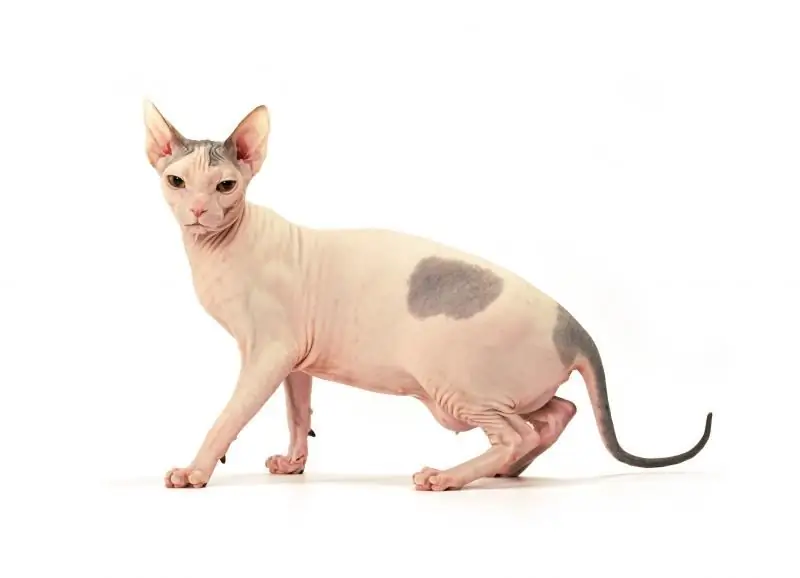
Table of contents:
- Don Sphynx: bald miracle
- History of the origin of the Don Sphinxes
- Description of appearance
- The character and behavior of the Don Sphynxes
- Health
- How to choose a kitten of the Don Sphynx
- How to care for the Don Sphynx
- How to feed the Don Sphynx
- Breeding the breed
- Video: all about the Don Sphynx breed
- Owner reviews
- Author Bailey Albertson [email protected].
- Public 2024-01-17 22:26.
- Last modified 2025-06-01 07:32.
Don Sphynx: bald miracle

Among cats, there are many exotic breeds that surprise with their appearance: without a tail, with a color of a wild animal and even without hair. Sphynxes belong to such hairless breeds. Not everyone knows that in Russia their own breed of these unusual beauties was bred. Their name is the Don Sphinx.
Content
- 1 History of the origin of the Don Sphynxes
-
2 Description of appearance
- 2.1 Photo gallery: varieties of the Don Sphynxes according to the degree of hair loss
- 2.2 Breed standard
- 2.3 What is the difference between the Don and Canadian Sphynxes
- 2.4 Differences between the Don Sphynxes and St. Petersburg
- 3 The nature and behavior of the Don Sphynxes
- 4 Health
- 5 How to choose a kitten of the Don Sphynx
-
6 How to care for the Don Sphynx
6.1 Toilet
- 7 How to feed the Don Sphynx
-
8 Breeding the breed
8.1 Castration and sterilization
- 9 Video: all about the Don Sphynx breed
- 10 Owner reviews
History of the origin of the Don Sphinxes
Don Sphynxes are a very young breed. Their history began in the near 80s of the XX century in Rostov-on-Don. Having picked up on the street a kitten no different from the rest, the hostess noticed after a while that her pet began to go bald. First, the hair disappeared on the head, then on the back. Veterinarians assumed that the cat, whose name was Varvara, was sick, and tried to treat her. But the pet's health was good, Varya did not show any signs of discomfort.
After 2 years, in 1988, the hostess decided to show her pet to felinologists (specialists in domestic cats). It was then that Irina Nemykina turned her attention to her, who remembered a note read some time ago in a magazine that a new hairless breed of cats was bred in America, which was called the Sphynx. It was Irina who suggested that Barbara's offspring could have the same appearance as their mother.
After another 2 years, Varvara gave birth to three kittens, whose father was a European Shorthair cat. One kitten, named Chita, almost completely lost its fur as it grew older. Only the legs and tail were not bare. Chita was presented to Irina, who decided to seriously engage in breeding a new breed.
In 1991, 4 kittens were born from Chita. They were not completely naked. Their skin was covered with light fur, but it was still difficult to call it full. This type of sphinx is called a brush.
Having founded a cattery called "Myth", Irina Nemykina continued to work on breeding cats that could be called sphinxes. For a long time, kittens with a wool cover were born from Chita. Over time, many of them lost it. Having decided to carry out inbreeding (mating of related animals, in this case, mother and son), Irina first received a kitten that was born immediately without hair, that is, naked.
For the first time, representatives of the Don Sphynx breed participated in an exhibition in Moscow in 1993. In 1997 the breed standard was adopted. And in 1998 the Don Sphynxes received worldwide recognition.

Barbara the cat is the progenitor of the Don Sphynxes
Description of appearance
The Don Sphynx is a medium sized cat. The height at the withers is about 30 cm. The weight of the female is from 3.5 to 5 kg, and that of the cat is up to 7 kg.
According to the degree of hair loss, there are 4 types of Don Sphynxes:
- Completely naked. There is no wool at all. The body is hot and sticky to the touch, like rubber, covered with numerous folds. Kittens become bald either in the womb, or 2-3 days after birth.
- Flock. The coat is very short and soft. It is very difficult to see it. The skin is peach-like to the touch. These kittens become completely naked by about 2 years old.
- Velours. Compared to flock wool, velor is characterized by longer hairs. They are approximately 2-3 mm long and can already be seen. As they grow older, the coat may disappear completely.
- Brush. The skin of such cats is covered with tough, sparse, rather long hair, which is unevenly distributed throughout the body. Rather large areas of baldness may be present and are usually located on the back, neck and head. At exhibitions, such individuals do not receive prizes, but they are often used to breed offspring.
Photo gallery: varieties of the Don Sphynxes according to the degree of hair loss
-

Donskoy Sphinsk flock -
It is very difficult to distinguish the wool of the Don Sphynx flock with the naked eye
-

Naked Don Sphynx - The skin of the naked Don Sphynxes resembles hot rubber
-

Don Sphinx Brush - Don Sphynx brushes are used for breeding
Breed standard
The breed standard characterizes the Don Sphynx with the following parameters:
- The head is wedge-shaped. Cheekbones and brows are clearly visible. The forehead is flat, with folds. The nose is straight. Vibrissa pads (whiskers) are clearly visible.
- The ears are wide. Widely delivered. Rounded tips. From the outside, the line of the ears extends beyond the border of the cheeks.
- The eyes are medium, the cut is almond-shaped. Not wide open. The color of the iris can be any color.
- The body is muscular and strong. The back is straight. Posture is graceful.
- The limbs are thin and long. The pads of the fingers are oblong, the fingers seem to be elongated and thin.
- The tail is straight and long.
- The skin is elastic. There are folds in the head, neck, armpits and groin. In kittens, the muzzle may have an "ear muff" - a short thin hair that lengthens in the cheeks and the base of the ears. Often in winter, sphinxes have fluff all over their body.
- Color, which, in the absence of hair, is determined by skin pigmentation, can be any.
The following signs are defects:
- short, round, or narrow head;
- small or low set ears;
- Round eyes;
- short, light, weak body;
- short or incorrectly ending tail;
- complete pubescence of the body;
- undershot up to 2 mm.
What is the difference between the Don and Canadian sphinxes
First of all, the differences lie in the history of the origin of the rocks. Don Sphynxes have appeared quite recently, while Canadian hairless cats have been known for a very long time. Outwardly, they also differ:
- Canadian Sphynxes are covered with a barely noticeable downy eye, and Don Sphynxes can be completely naked.
- The head of the Don cats is wedge-shaped, while that of the Canadian cats is rounded.
- The cheekbones and eyebrows of the Don sphinxes are clearly visible on the muzzle, while those of the Canadian sphinxes are smoother.
- The eyes of the Don Sphynxes are slanted, almond-shaped, of medium size, while those of the Canadian ones are large and oval.
- The ears of Russian sphinxes end in rounded tips, while Canadians have sharper ones.
- Donetsk residents have a more robust physique than Canadians.
- On the tail of the Canadian Sphynxes, there may be a tassel, which cannot be found in the Don hairless cats. Also in Canadians, the tail tapers towards the tip.
- Canadians' skin is more wrinkled, especially around the neck and armpits.

The Canadian and Don Sphynxes differ in both external data and character
These breeds also differ in character: the Don Sphynxes are more fun and curious, but Canadians are reserved and harsh, but in general they are also quite peaceful. The health of Russian hairless cats is more robust, while the Canadian sphinxes cannot boast of it.
Differences between the Don Sphinxes and St. Petersburg
Among the hairless cats, the Peterbald breed is also distinguished. She appeared in St. Petersburg (hence the name) as a result of crossing the Don Sphynx and the oriental cat. Peterbalds can be distinguished from Donchaks by the following features:
- in Peterbalds, the ears are set lower on the head and the tips do not look up, but slightly to the side, in fact, because of this setting, the shape of the Peterbald's head is even more wedge-shaped;
- in the Petersburg Sphinx the head is to some extent comparable to the head of a snake, it is flat and narrow, with a straight profile;
- Peterbalds have fewer folds on the body;
-
it is the St. Petersburg Sphinxes that have thin slender legs, and they themselves are graceful, thin and "transparent".

Peterbald Peterbalds are thin and graceful
The character and behavior of the Don Sphynxes
These clean cats are distinguished by their good-natured disposition, lack of aggressiveness and affection for humans. Don Sphynxes consider themselves full members of the family. They love active games, so the pet should have toys so that it can splash its energy out. But at the same time, they are not averse to being lazy. Their favorite pastime is to doze, curled up in a ball.
In the absence of attention from the owner, these cats annoyingly make themselves felt. But the Don Sphynxes are very smart. They are easy to train and tray-trained. Among the household members, they single out the owner, who is given more signs of attention than other family members. They get along very well with children and other pets. The attitude towards strangers is also calm. The Don Sphinx very quickly shows its guests its trust by climbing on their knees.
With all this, the Don Sphynxes know how to take offense at their owners. Fortunately, they do not disturb the order in the house with their revenge, but for a long time they can look reproachfully into the eyes of their owner.

Don Sphynx is a very kind and playful breed
Health
In general, the Don Sphynxes have quite good health, but there are some nuances that the owner of these naked purrs should know:
-
the lack of fur makes these cats prone to frequent colds, especially when exposed to drafts;

Don Sphynx in clothes Don Sphynxes should be protected from cold and drafts
- diseases such as volvulus of the eyelids, curvature of the tail, cyst of the mammary glands, acne (inflammation of the sebaceous glands) are not uncommon for the Don Sphynxes;
- animals may develop an allergic rash on the body;
- in the absence of proper eye care, they can become inflamed.
The average life span of the Don Sphinx is 12-15 years.
How to choose a kitten of the Don Sphynx
When choosing a kitten, first of all, you should decide what goals the purchase of this animal pursues. Sphynx brushes cannot get awards at exhibitions, but in procreation they cannot do without them. Therefore, if the future owner has a desire to participate in exhibitions for the sake of victory, then velor, flock or absolutely naked kittens should be purchased.
The optimal age for buying a kitten is three months. Some breeders assure that you can buy a baby within 1-2 months after birth. But kittens at this age are still very attached to their mother, so it is better to purchase them a little later. In addition, by this time most of the breed's signs will be clearly visible.
Naked Don Sphynxes are usually born immediately like this. In the amniotic fluid, you can even find hairs that they shed while still in the womb. Velor and flock kittens are born with sparse hair, which is shed after a while. Brushes, on the other hand, can be born quite hairy and acquire a characteristic woolen coat only in adulthood.
It should be noted that the kitten's appearance may change with age. Brush can eventually become velor or completely naked, velor - flock. Naked kittens in the winter season can acquire a short down, which disappears with the onset of warmth. It can take from 2 months to 2 years for a pet to take its permanent form.

Don Sphynx kittens are best bought no earlier than three months of age
When examining Don kittens, you need to pay attention to the same criteria as when buying any other kitten:
- the baby should be playful and curious;
- the stomach should not be swollen;
- eyes and ears must be clean;
- the teeth are white and even.
It is best to purchase your pet from reputable nurseries. You can also buy a kitten at the show. But buying a sphinx from hands on the market can turn into a disappointment. Buying a pet at a pet store is also not the best option, as these cats spend a lot of time in cages and, accordingly, are less socialized and not potty trained.
The kitten's appearance must comply with the standard. In order not to confuse the Don Sphynx with the Canadian one, you need to pay attention to the shape of the eyes (it should be almond-shaped), the ears should be wide with rounded tips, and the body should be pear-shaped.
The cost of kittens directly depends on the purpose for which the animal is purchased:
- If a kitten is bought for the soul, then on the Internet you can find a price from 7-8 thousand rubles. Such animals are usually pet-class, that is, they do not participate in shows or breeding due to any non-compliance with the standard. These are the most inexpensive individuals. Also, brush kittens are usually much cheaper.
- Breeding cats are suitable for further breeding. The appearance of such animals slightly deviates from the standards, and they usually do not receive high places at exhibitions. But they are ideal for breeding. Kittens of this class cost from 15 thousand rubles.
- The most expensive animals are representatives of the show class, which claim prizes. Their cost starts from 35 thousand rubles.
How to care for the Don Sphynx
Caring for the Don Sphynx is not as difficult as it might seem at first glance. Pet eyes require special attention due to the lack of eyelashes. They need to be regularly wiped with a cotton pad moistened with boiled water, chamomile infusion, saline, furacilin solution (1: 5000), a slightly pink solution of potassium permanganate, "dormant" tea or special means. This procedure must be carried out 2-3 times a week.
With redness of the eyes, you can use drops of Maxidin or Anandin. They are instilled into the eyes 1-2 drops 2-3 times a day for no longer than 2 weeks. In the absence of a therapeutic effect or when the condition of the animal deteriorates (swelling of the eye, the appearance of purulent discharge), it is imperative to consult a veterinarian.

Before using Maxidine, it is advisable to consult a veterinarian
Don Sphynxes are bathed more often than ordinary cats: 1-2 times a month. The procedure can be carried out as soon as it gets dirty. Sphynxes with light colors have to be washed more often, with dark ones - less often. To do this, you need to use mild detergents or special shampoos designed for hairless cat breeds.

There are special shampoos for hairless cats.
It is also necessary to wipe the animal's skin weekly with a soft cloth moistened with warm water or damp alcohol-free wipes. It is imperative to thoroughly wash each fold, as dirt and sweat can accumulate in them, which, in the absence of proper hygiene measures, often leads to inflammation.
Water procedures should be carried out in a well-heated room, the water temperature should be about 38 °. After bathing, the sphinx should be wiped dry, spread with baby cream and wrapped in a warm blanket. It is imperative not to allow the animal to be in a draft, as it can catch a cold. In no case should you use a hair dryer to dry sphinxes, this can lead to burns of the skin. There is no need to comb the Don Sphynxes.
The sphinx's skin is exposed to ultraviolet radiation, therefore, when going outside, it is recommended to use children's sunscreens or special creams to protect the animal's skin from the sun's rays.
Claws should be trimmed as needed. To avoid the appearance of tartar, it is recommended to brush your teeth several times a week. The ears require regular examination and cleaning. Veterinarians recommend doing this once every 7-10 days.

Don Sphynx water procedures should be regular
Restroom
Tray training in the Don Sphynx usually occurs without difficulty. But it is necessary to ensure that the toilet is always clean, since the sphinxes will not go into a dirty litter box.
For the Don Sphynx, it is better to choose a plastic toilet. It does not absorb odors, is easy to clean, and does not rumble when used as directed. Any filler can be added. The main thing is that the cat likes him. In addition, their choice is quite large: wood, clay, silica gel, etc.
From my own experience and the experience of friends, I can say that not all fillers are liked by this or that cat. The relatives had a cat who relieved only for the newspaper. And since this filler is not very hygienic (the cat comes out with wet paws, the smell is not absorbed), the owners of the animal decided to purchase a special clumping one. But the cat flatly refused to accept such a change and just did his dirty cat affairs next to the litter box. I had a similar story. My lovely Persian cat Vasilisa preferred only sand. And I did not recognize other fillers.
So experiment. Choose what the cat likes. In any case, it is at an early age that the kitten gets used to the conditions that the owners offer him.
The tray size should not be small. There must be a free space for the sphinx so that it can do the burial ritual. Trays about 40 cm long, 10-15 cm high and 35-38 cm wide are well suited for them.
How to feed the Don Sphynx
The lack of a full-fledged coat is the reason that Sphynxes, compared to other breeds of cats, consume more food to maintain optimal body temperature. They have increased energy exchange and high heat transfer. Accordingly, they consume more calories.
You can feed your pet with ready-made feed and natural food. Don Sphynx are only suitable for premium and super premium ready-made feeds.

Some manufacturers have special food for sphinxes
From natural products in the cat's diet, the following components must be included:
- meat (beef, poultry, lamb);
- fish (exclusively seafood, raw or boiled);
- eggs (chicken, quail);
- vegetables;
- cereals (all types of cereals are allowed);
- dairy products (milk, sour cream, cottage cheese, kefir, hard and low-fat cheese, yogurt and others);
- offal (liver, heart, lung, udder, you can use chicken necks, heads, hearts, liver raw, but you need to be sure of their quality level);
- soups (broths).
It is forbidden to give the cat the following food:
- river fish raw;
- bones (tubular bird, rabbit and fish);
- fatty pork or poultry meat and lard;
- smoking, salted and spicy products;
- sweets and pastries;
- dog food, it does not meet the needs of the cat;
- foods that contain chocolate, as they can be toxic to your cat;
- leftover food from its table, because the animal gets used to choosing food and refuses its usual food.
In some sources you can find information on the combination of prepared feed and natural nutrition. Not all experts believe that this is acceptable. In particular, I do not think this is correct, since it is very difficult in such a situation to find a balance between proteins-fats-carbohydrates and calories in general. Therefore, I would not recommend this way of eating. In any case, each controversial issue needs to be resolved with a veterinarian who will help to correctly formulate the diet of a home pet.
Serving size should be calculated individually based on the activity of the animal, its condition and age. Your veterinarian will help you to do this. The frequency of feeding depends on the age of the pet. Up to 5 months he is fed 4-5 times a day. After six months, the number of feedings is reduced to 3-4 times a day. An adult cat is also fed 3-4 times a day, while two meals a day are sufficient for most other breeds. It is very important not to overfeed the sphinxes, as they are prone to obesity.

Donchaks do not refuse to try food unusual for other cats
Like any other pet, the Don Sphynx must have access to clean water. Bottled, filtered or spring water is suitable for him.
Breeding the breed
Females of the Don Sphynx reach sexual maturity at the age of about 6 months. It is then that the first heat begins. But it is impossible to plan mating for this time, since the body of the kitten is not yet ready for motherhood. The 3rd heat is optimal for conception.
Males become sexually mature only by 8 months. But they are not yet ready to mate. The optimal age for fertilization for both the female and the male is considered to be 1.5-2 years old.
The Don Sphynx pregnancy lasts about 64 days. It usually proceeds without features. Childbirth is calm, in most cases no help from the person is required. Approximately 4-6 kittens are born in the litter. They can be completely different. Often, naked, velor and brush babies are born at the same time.
You cannot knit two naked sphinxes. This leads to genetic diseases and various health problems. Also mating with cats of other breeds, including Canadian Sphynx or Peterbald cats, is unacceptable.
Castration and sterilization
In the philistine understanding, castration refers only to the termination of the possibility of procreation in cats, and sterilization in cats. But this is not the case. These operations can be performed on both females and males.
Castration involves the removal of the testes or ovaries. After carrying out this procedure, the animal not only loses the ability to continue its race, but it also stops producing sex hormones. And during sterilization, the ligation of the seminal ducts or fallopian tubes occurs. At the same time, the hormonal background remains unchanged.
It is recommended to castrate the Don Sphynxes at the age of 7-8 months. An important condition for the operation is the descent of the testicles into the scrotum. Sterilization is recommended before the onset of the first estrus, that is, up to 6 months.
Video: all about the Don Sphynx breed
Owner reviews
The Don Sphynx is an ideal breed for those who cannot tolerate animal hair everywhere. Despite its exotic appearance, caring for him is not as difficult as it might seem. This is a playful and at the same time moderately lazy pet with an agreeable character. It is great for families with children.
Recommended:
Breed Of Cats Munchkin: A Description Of The Appearance, Photos, Features Of Character And Behavior, How To Choose A Kitten, Reviews Of Cat Owners
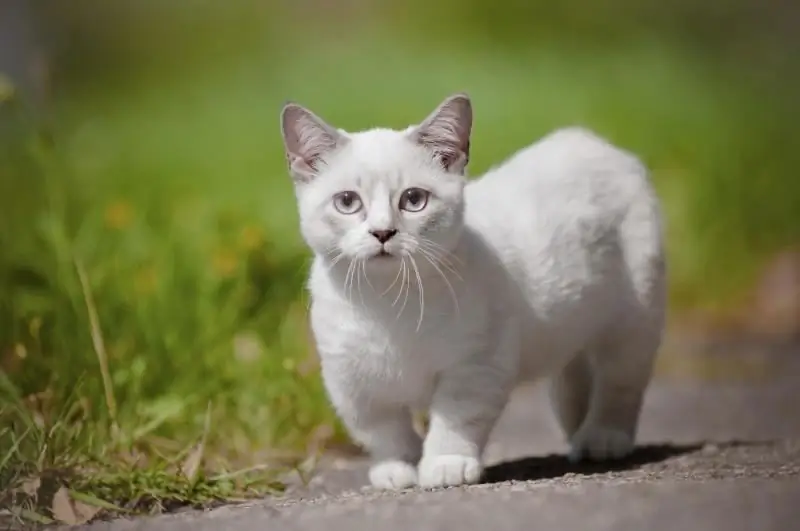
Description of the Munchkin cat breed. Features of character and behavior. How to properly maintain, care for and breed animals. Choosing a kitten. Owner reviews
Cat Burmilla: Description Of The Breed, Nature And Features Of The Content, Photos, Choosing A Kitten, Reviews Of The Owners, Breeding Cats
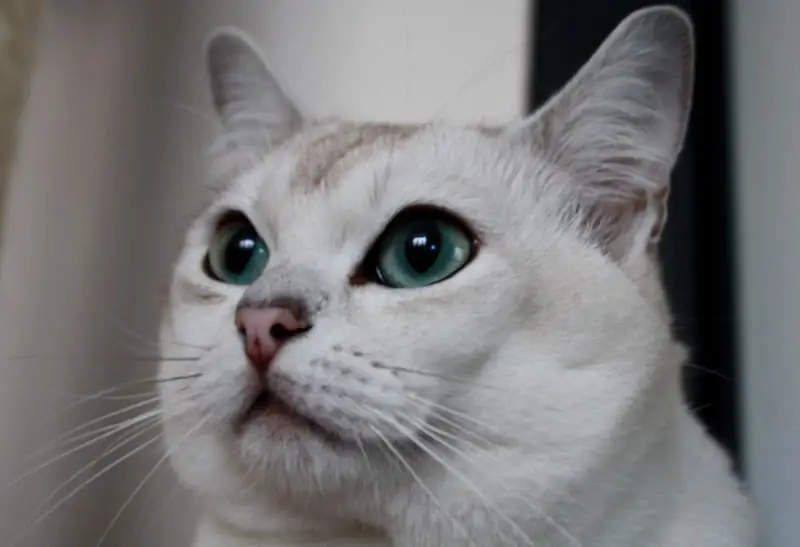
The origin of the Burmilla breed. Features of appearance and behavior. Acquisition and breeding issues. Care and hygiene of the Burmilla. Life expectancy. Reviews
Angora Cat: History Of The Breed's Origin, Appearance And Photos, Features Of Character And Care Of The Cat, Reviews Of The Owners
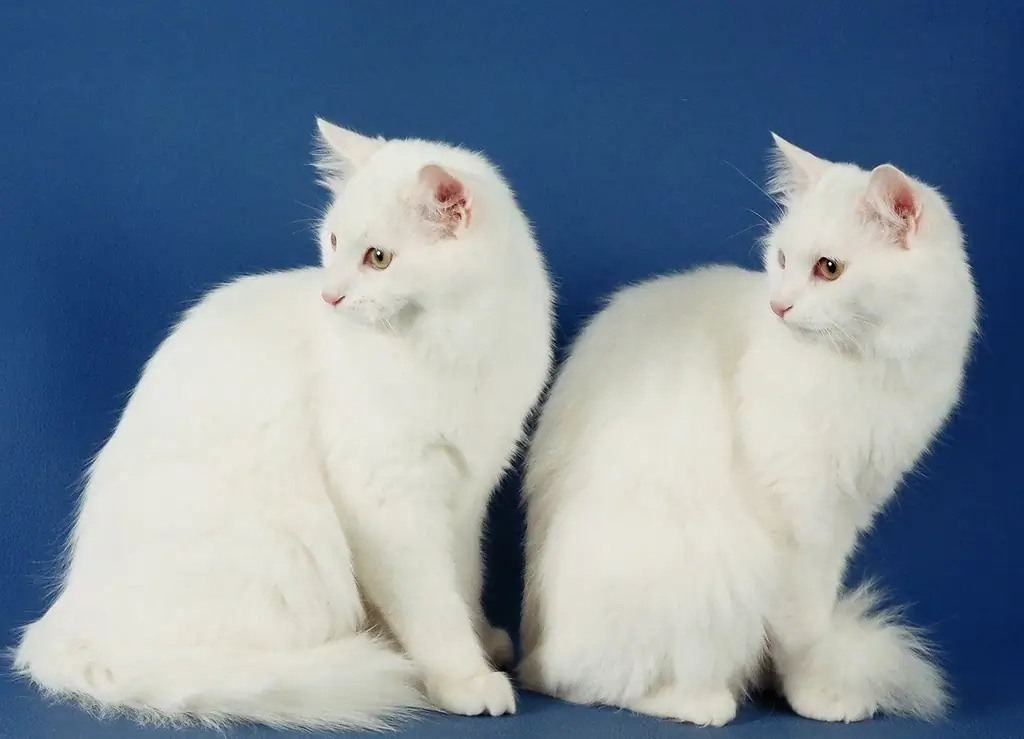
History of the Angora breed. Features of appearance and character. Disadvantages of the breed. Proper care and feeding. How to choose a kitten. Breeding the breed. Reviews
Anatolian Cat: Features Of The Breed's Appearance, Care And Maintenance Of The Cat, Character And Habits, Breeding Pets, Owner Reviews
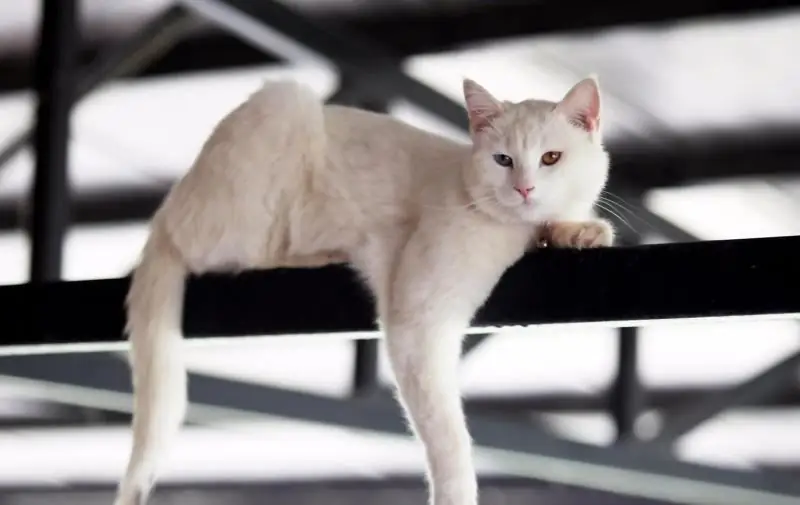
Where the Anatolian breed is bred. The main external differences, the nature of the pet. How to properly care for him, feed him. How to choose a kitten. Breeding. Reviews
Canadian Sphynx: Appearance And Nature Of The Breed, Care And Maintenance, Owner Reviews, Photos
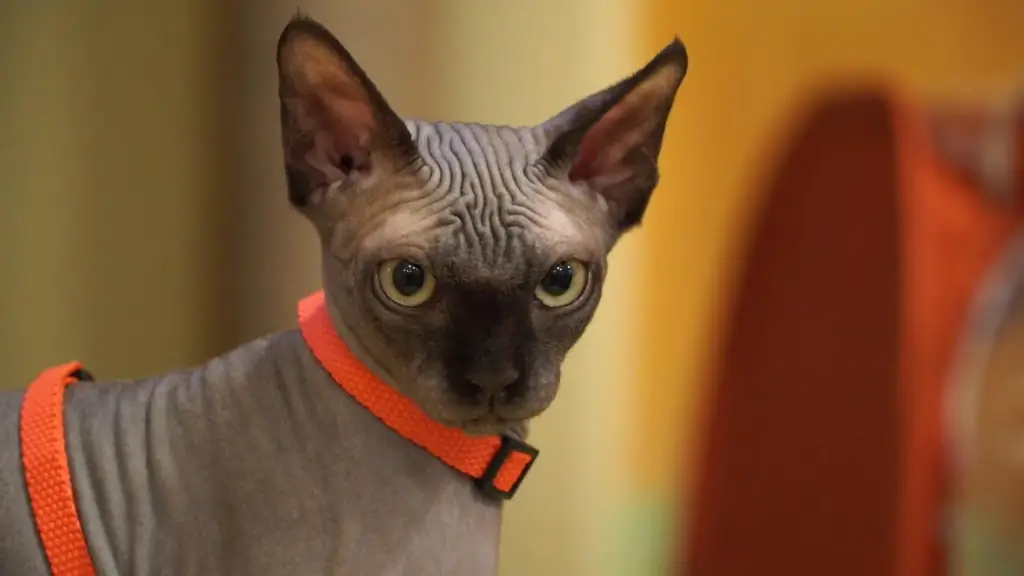
The history of the origin of the breed. The appearance of the Canadian Sphynx. Character traits. Care rules. How to feed Canadian sphinxes. Breeding the breed. Reviews
